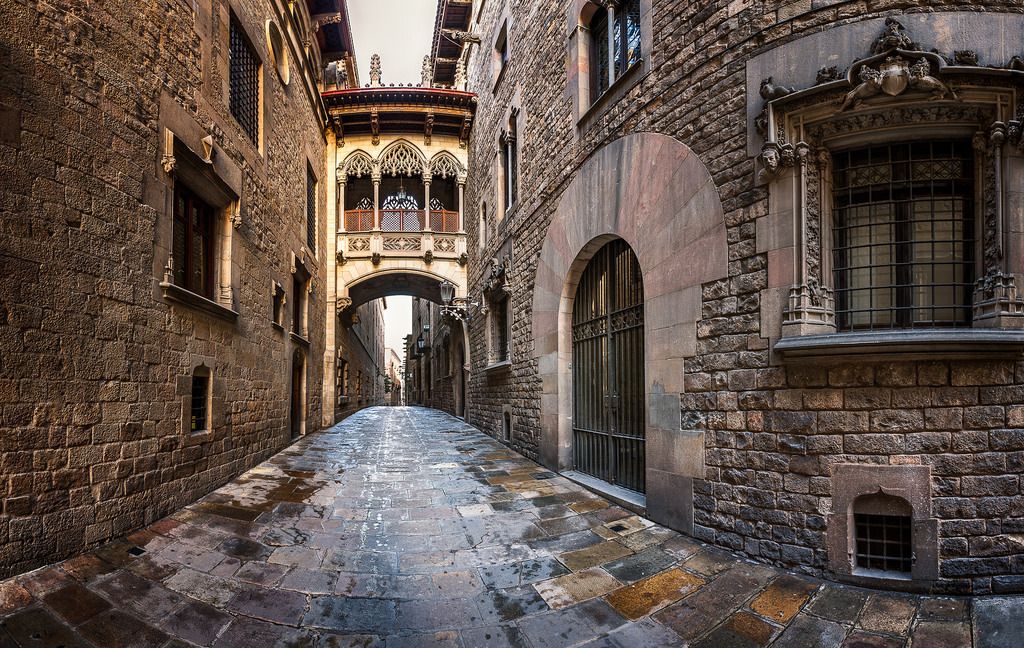Barcelona Guide to The Old Town. Gothic Quarter, Raval, Barceloneta
As mentioned, Cuitat Vella (The Old Town) comprises four main areas: El Raval, Barri Gotic, El Born, and La Barceloneta. The latter is an old fishing village which was built on the natural banks of the Mediterranean, and has its own distinct style, festivals and, for the sun-seeker, the city’s closest beach. The area houses small apartment blocks in tiny streets which run parallel to each other starting from the beach front and stretching back to the harbour with moored yachts and boats, as well as some of the city’s finest restaurants. The majority of apartments here are small – 1 or 2 bedroomed, and very few have elevators.
The border of Barceloneta then joins El Born – really an extension of the Barri gotic or the Gothic Quarter. This is a mainly pedestrian area, with small windy streets and has many beautiful buildings from Roman times, as well as some of the cities oldest churches. Town planning recently discovered Roman remains whilst refurbishing the Market of Santa Maria del Mar, which have been cleaned and preserved and can be viewed by the public. Following on from El Born is the Barri Gotic; again, a mainly pedestrian area and the Medieval part of the city, with a plethora of shops, boutiques, and small restaurants. This area is also famous for housing some of the city’s main attractions, such as the Cathedral of Barcelona dating from the 13th century, and a perfect example of Gothic architecture, the Picasso Museum, the Textile Museum – even the Chocolate Museum! Also in the middle of this area is the Plaça Sant Jaume, which houses the City Hall and the Catalan government headquarters. The Barri Gotic has its border on one side with the Cuitadella Parc – named “Barcelona’s Garden” – which houses the city’s zoo, fountains, a former citadel, lakes with boat rides, and children’s play areas.

The other side of the Barri Gotic, starting from the port, is the world famous Las Ramblas – a 1km stretch of everything that is Barcelona. The towering monument of Christopher Colombus stands at the bottom of Las Ramblas, pointing the way to the new Americas, and the starting point of a cultural journey you’ll never forget! The monument also has a viewing gallery at the top, with a lift to take you up and enjoy the view. Moving north, you’ll find the city’s Wax Museum on the right, tucked away down a little alleyway – although the museum itself is fairly large. On the opposite side is the Santa Monica Art Centre. Fitting, then, that this is also full of 24 hour stalls of the city’s painters, artists, charicature & portrait painters, amongst many things. Continue walking and you’ll find one of the many, many street performers – maybe a human statue, maybe a juggler, maybe even Bart Simpson. Also here begin the many pavement cafés and bars – some of the most famous and oldest in the city, where it’s almost impossible not to stop and have a coffee, a beer or a jug of sangria while you watch the world go by.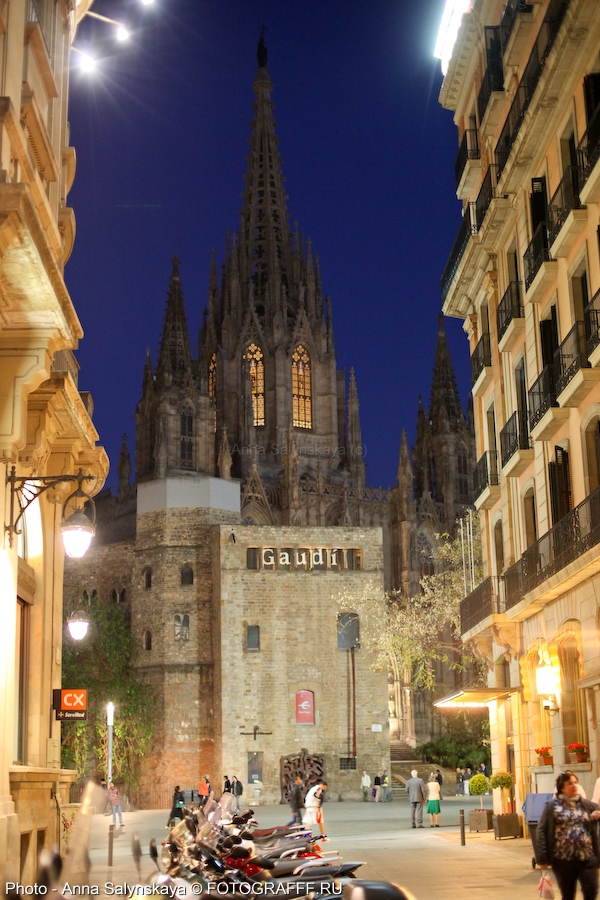
Las Ramblas is littered with 24 hour newspaper kiosks selling national and international press, magazines and books. Don’t ask them for stamps, though – you have to go to the tobacconists (Tabac) for those. Halfway up Las Ramblas on the left, you’ll find the Plaça Reial (Royal Square), with pavement cafés and bars, restaurants, clubs and discos, and a fountain in the middle. On the opposite side of Las Ramblas is the Liceu Opera House and La Boqueria market – the most famous food market in the city, with absolutely everything you can eat on offer – if you can’t find it in La Boqueria, it doesn’t exist! Continue on your way, passing the Palau de la Virreina – always has an interesting exhibition – on the left and the Erotic Museum on the right until you reach Plaça Catalunya – the city’s main square, flanked by two fountains “Les Fonts de Canaletes”. Legend has it that if you drink from the fountains, one day you’ll return to Barcelona.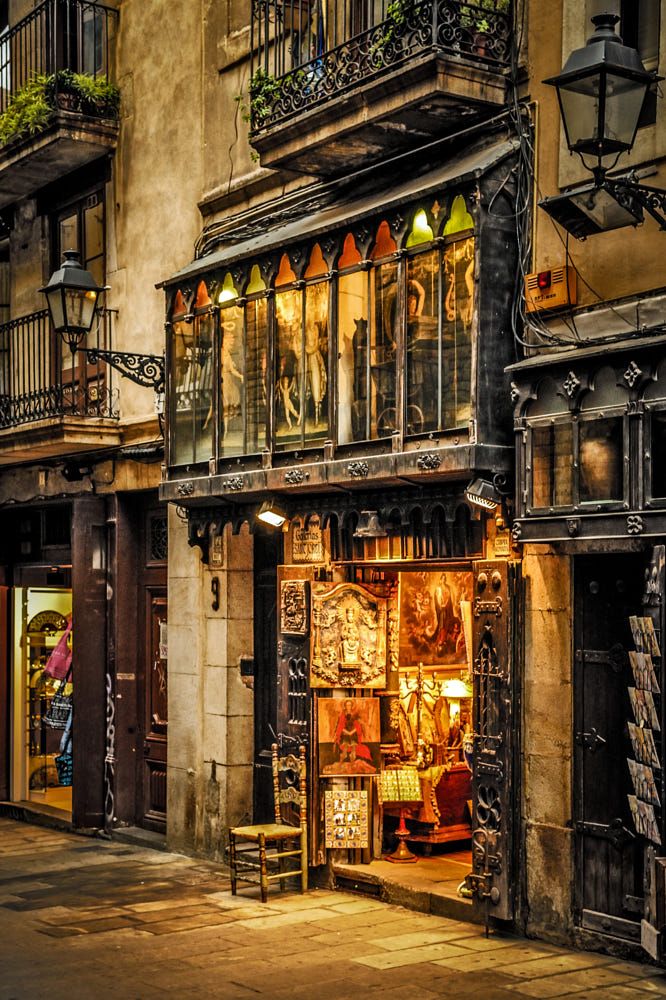
From the bottom of Las Ramblas to the left (as you look at the map) is the border of El Raval. This area is surrounded by the old Roman defence wall, most of which can be still seen, along Paral.lel street, and don’t miss the beautiful Sant Pau del Camp church – the Romanesque church which survived the civil war. This diverse area of the city was recently recognised as the world’s most ethnically diverse urban space. Variety is the spice of life, and this area has many diverse shops, restaurants, art as well as some of the newest bars and clubs, nestled next door to some of the most famous restaurants. This area of the city also hosts the Maritime museum, the new MACBA Modern Art museum, the Palau Güell – one of Gaudi’s most famous buildings – and also boasts the city’s Sonar Music Festival, held in a handful of places in this neighbourhood each year.
Like the sound of the old town? Why not check out some of our old town apartments?
Old Town 1 | Old Town 2 | Old Town 3 | Old Town 4
Next | Las Ramblas
This page is valid: XHTML 1.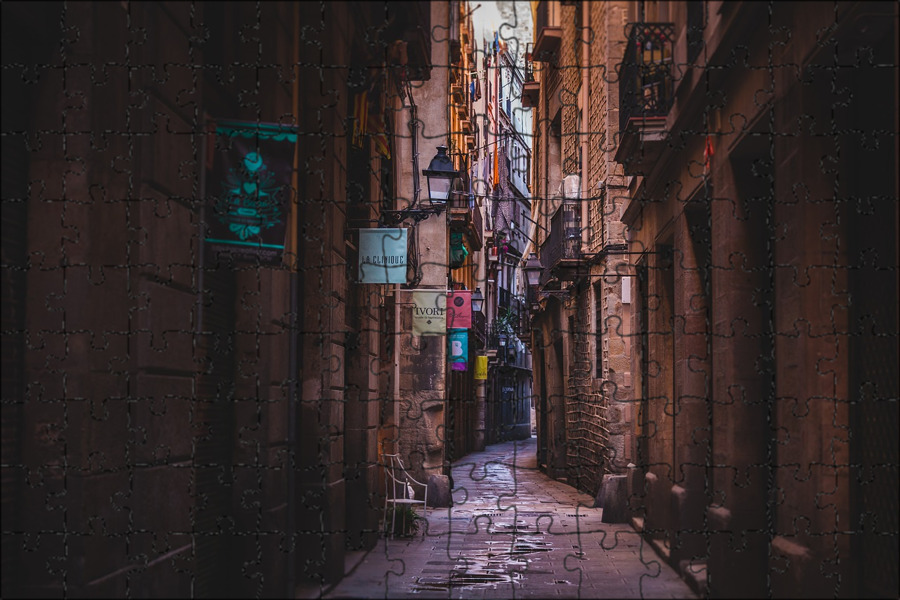
The Old Town of Barcelona (Ciutat Vella)
Surely, neighborhoods for the old town of Barcelona are the most visited by tourists. Ciutat Vella, besides being an architectural showcase with a historical and cultural heritage of impressive size, it is one of the main restaurants and places to have drinks in the city. The number of alternative shops, bohemian atmosphere and rich cultural offerings, make the Ciutat Vella one of the main attractions of Barcelona.
Ciutat Vella (old town in Catalan), is a district that consists of 4 neighborhoods. It is bordered by the Mediterranean Sea in the far south of the city and adjacent to Plaça de Catalunya, Plaça Universitat and Plaça Urquinaona in the north.
You will be able to stroll nearly throughout the entire district of Ciutat Vella in daytime as it is full of shops with alternative products, of clothing and accessories, footwear, furniture, etc., and you will not be short of places to eat or have a drink.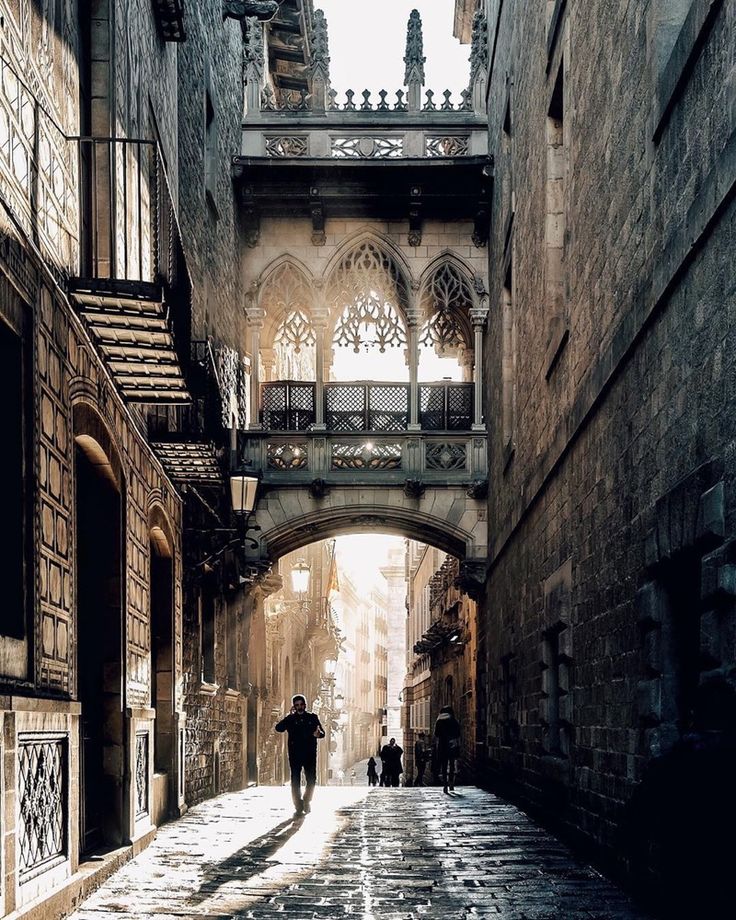
The streets of Ciutat Vella are considered a must-see to discover Barcelona and you should seriously contemplate them in your visit to the city.
The four quarters of Ciutat Vella
The district covered by the old town is divided into four neighborhoods. On the one hand the Raval, a neighborhood with a rich multicultural environment with a strong bid to cultural spaces. You also have the Gothic Quarter with its special architecture and its wonderful shopping streets. Third is the neighborhood of Sant Pere, Santa Caterina i la Ribera, a neighborhood where the Born is, the most popular and very bohemian part of the quarter, and fourthly and finally we have the Barceloneta, a beachy neighborhood and the most maritime of Ciutat Vella, where you will find restaurants, swimmers and people surfing on the beach or strolling along the promenade.
In this article dedicated to Ciutat Vella you will find an overview of the Old Town district and a descriptive summary of each of the 4 quarters.
You have the links below:
The Raval
Between the Rambla and the Parallel street is the Raval, which corresponds to the former Chinatown of Barcelona, the typical brothel quarter of port cities, now completely renovated and that has successfully bet, among other things, on cultural spaces offering.
In this part of Ciutat Vella, is the Boqueria Market, the Liceu Grand Theatre, the Museum of Contemporary Art of Barcelona (MACBA) and the Centre for Contemporary Culture in Barcelona (CCCB) among other places of interest.
Lovers of Art Nouveau architecture can visit the Güell Palace, which was the first major commission to the Catalan architect Antoni Gaudí, commissioned by Eusebi Güell.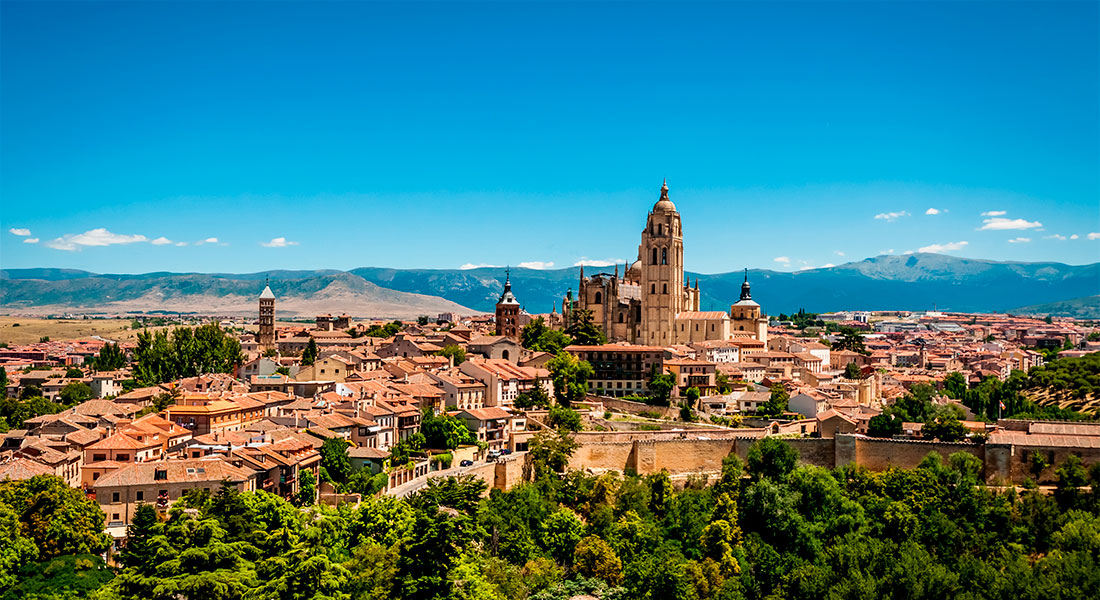
The former convent of Sant Agustí, that today remains only the church, and the monastery of Sant Pau del Camp are some of the places that you should also visit if you’re in the Raval.
If you stroll, you’ll find many alternative and vintage clothing shops, as well as the artisans market on the Rambla del Raval at weekends. In the lower part of the Raval, there are the Royal Shipyards of Barcelona, which are the seat of the Maritime Museum, a museum free on Sunday afternoons.
The Gothic Quarter
The Gothic Quarter is bounded by the Ramblas and Via Laietana, it has its entrance by Catalonia Square through one of the most important shopping streets of Barcelona, Portal de l’Àngel. Here you can find many clothing and shoe shops, as well as fashion and accessories and a seat of El Corte Ingles, the biggest department store in Spain.
The Cathedral of Barcelona is also located in the Gothic Quarter and also the Barcelona City Council, the Church of St. Anna and the Esglesia del Pi (Church of the Pine).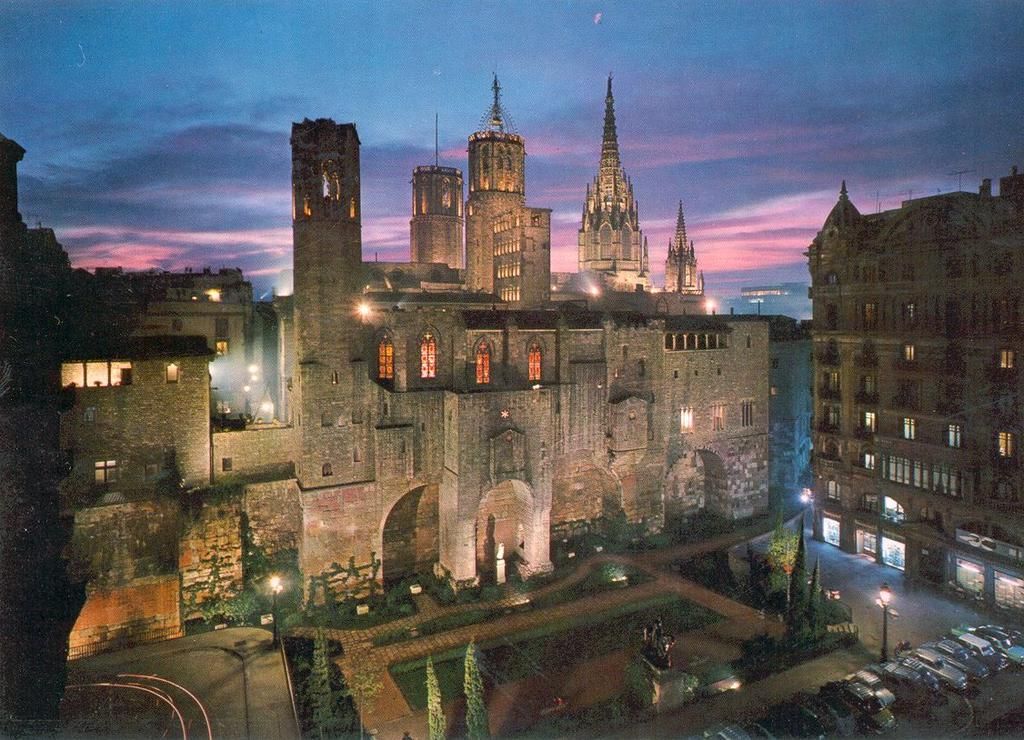
We suggest you to walk down the Bisbe street (Bishop Street) or the Ferran street, both overlooking the Sant Jaume square and discover this fabulous Old Town district.
In the Gothic Quarter you will also find the Plaça del Rei (the King Square), wherein is the headquarters of the Barcelona City History Museum (MUHBA) with a spectacular archaeological site in the subsoil.
It is also found in this part of Ciutat Vella, the old Jewish quarter of Barcelona, El Call, where you will have the opportunity to discover the charm of its old streets and you can visit one of the oldest synagogues in Europe.
Sant Pere, Santa Caterina i la Ribera
It is divided into three sub quarters being possibly the Ribera and the Born the most popular areas, perhaps due to its large amount of entertainment oriented establishments such as restaurants or bars, to its bohemian atmosphere, or to the number and type of commercial establishments.
In the Born you will find many art galleries, restaurants and nightlife bars.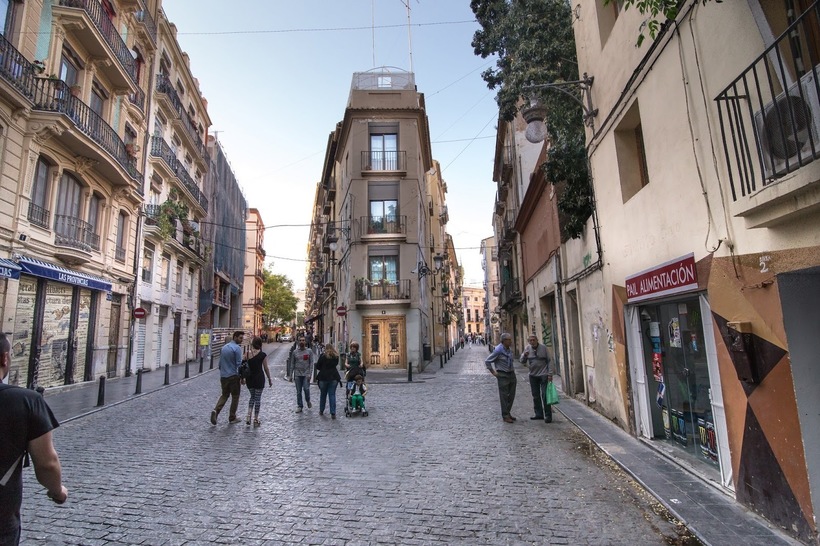
HappyBarcelona.eu recommends you to visit the former Born Market completely restored, that exposes a an archeological site corresponding to the medieval Barcelona in what is now the Born Centre Cultural, near the Basilica of Santa María del Mar.
The Mammoth Museum, the Picasso Museum and the Chocolate Museum are just a sampling of the many museums you can find in this part of Ciutat Vella.
Depending on where you come from, you can take the Princesa or Montcada streets to continue discovering this beautiful part of Barcelona.
But it is not only the Born. The rest of the neighborhood, deserves likewise a visit and you will find real gems of Barcelona’s heritage as the Palau de la Música Catalana (Catalan Music Palace), designed by the architect Lluís Domenech i Montaner, in the neighborhood of Sant Pere, and the Santa Caterina Market in the neighborhood which gets its name, where you can visit a small archaeological site of the ancient convent of Santa Caterina through the MUHBA museum.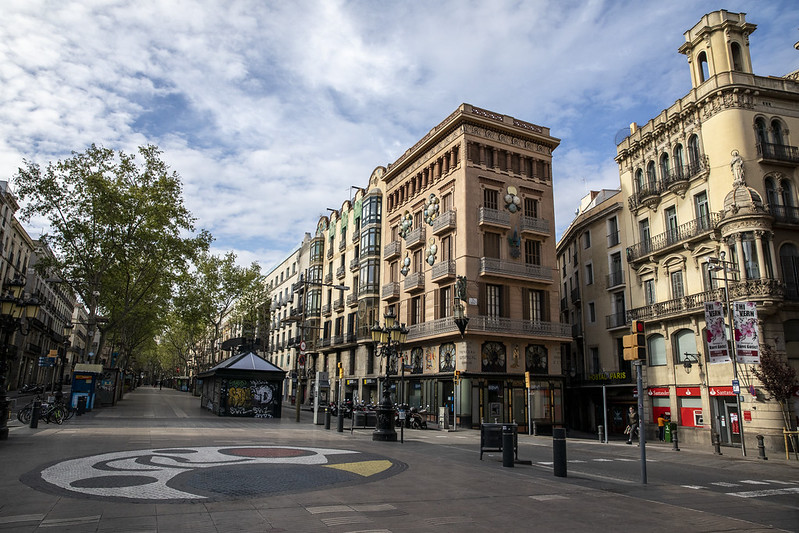
La Barceloneta
The fourth neighborhood corresponding to Ciutat Vella, La Barceloneta, is popularly known because of its tapas and paella restaurants attending always to the locals themselves.
Although that the supply of beaches of Barcelona has increased considerably since the urban redevelopment of the Olympic Games in 1992, the beach of the Barceloneta remains one of the most visited in summer. It is common, in addition to swimmers, see surfers or artists making sand figures on the beach.
In addition to relax with pleasant walks near the sea in the Barceloneta you can visit the Church of San Miguel del Puerto, of Baroque style.
The main streets of the old town of Barcelona
In the vertical direction (perpendicular to the sea), we can consider these streets as the most relevant for those interested in visiting the old town.
La Rambla
It is one of the most famous streets of the city. La Rambla de Barcelona communicates Catalonia Square with the Port Vell (old port), while separates two of the four districts of Ciutat Vella.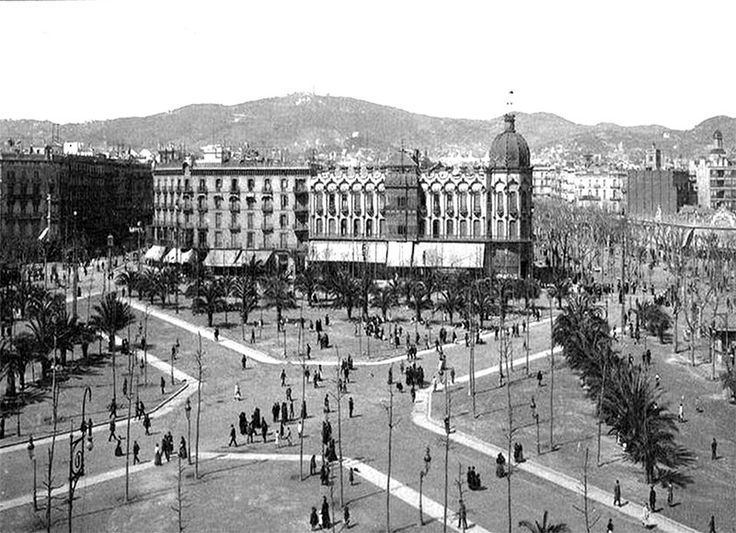
In the Rambla you can visit the Canaletes Fountain, which is said, if you drink the water you will return to Barcelona. Halfway up is the Boqueria market, one of the most important markets in the world, close to the Liceu Grand Theater.
In the far south of this tourist street is the Port Vell, that you’ll recognize when you get the Viewpoint of Columbus, the point where the Bosch i Alsina wharf (popularly known as the Moll de la Fusta) begins, and the Rambla del Mar that takes you to the Maremagnum and to the Aquarium.
In the Rambla, are the human statues, some truly amazing with whom you can shoot, and the trileros, which are swindlers who have spent many years operating in the Rambles taking advantage of tourists.
Undoubtedly it should be in the top ten places you must visit in Barcelona.
Portal de l’Angel
It is a semi-pedestrian street which can be taken from Catalonia street.
This is one of the most commercial streets of the city, which you will see for the large number of commercial establishments as well as the large number of people strolling and looking into the shop windows.
On its top you can visit the Church of Santa Anna, an old beautiful Gothic convent, if you take the street bearing the same name.
If you continue down, you will reach the Cathedral, the Church of Pine (Esglesia del Pi), Saint James Square, where the town council and other places in the Gothic Quarter are, depending on which streets you decide to walk.
Via Laietana
Via Laietana communicates Urquinaona square with the Port Vell and the Barceloneta neighborhood. Like the Rambla, the street separates two neighborhoods of the old town. On its eastern side there is Sant Pere, Santa Caterina i la Ribera, while at the west is the Gothic Quarter.
Walking down this street, you will pass very close to the square where the cathedral is, one of the most visited areas of the Gothic Quarter, and a little further down, at the height of the metro stop named Jaume I, on the right, you will enter also into the Gothic to get to the Plaça de Sant Jaume which is where the City of Barcelona and the Catalonia Government Palace are, but you can also go to the left, ie into the Ribera to take the Princesa or the Argentería streets, the latter one takes you to the Basilica of Santa Maria del Mar.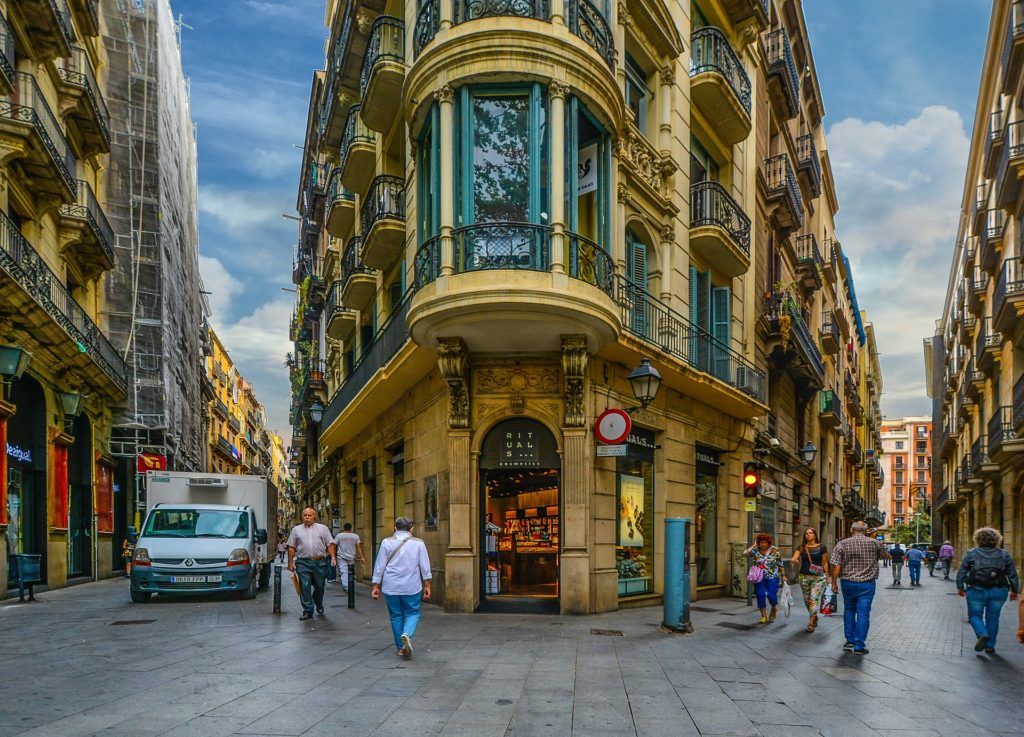
If you continue down Via Laietana to the end, you will arrive at an intersection from different streets quite large. Eastwards (down left) is the Passeig de Isabel II, where you can visit the Estació de França Art Nouveau train station, and beyond arrive at the Parc de la Ciutadella (Citadel Park) and at the Barcelona Zoo.
On the other hand, to the west, is the Port Vell (old port) with the Passeig de Colón, the Moll de la Fusta and the Spain wharf. At the bottom of all, where the monument to Christopher Columbus is, there is the lower part of the Rambla.
If instead of turning east or west, you proceed straight along Via Laietana, you will reach the Barceloneta neighborhood and will pass by the Museum of History of Catalonia.
Passeig Lluís Companys
It is already on the eastern edge of Ciutat Vella, just where the Arc de Triomphe of Barcelona is.
Assuming you stroll from the north to the south, before arriving at the Parc de la Ciutadella, you can take at the right hand side, the street named Comerç, that leads at the Chocolate Museum and at the archaeological site of medieval Barcelona in the Born Centre Cultural, the old market.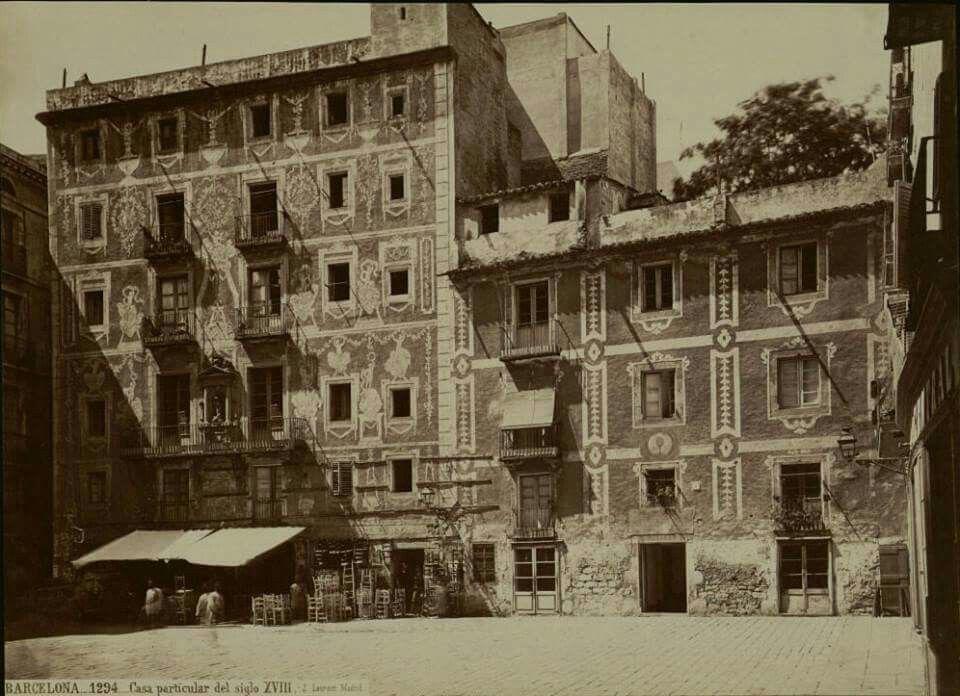
If you walk south, you will enter into the Citadel Park and if you continue along the park, you will arrive at the main door of the Barcelona Zoo.
If you walk out the square where the Zoo door is, to the west, you will arrive at the France Station (Estació de França) so you can make a short stop in this beautiful station, which HappyBarcelona.eu advised to visit, especially for architecture lovers.
Passeig de Picasso
This is the street with arcades which is in the west side of the Citadel Park.
From this street you can head west, and take the Princesa street, which crosses the Montcada street, which takes you to the Cathedral of the Sea and where they are, among others the Picasso Museum and the Mammoth Museum, two of the many museums you can visit in Ciutat Vella.
Halfway up Passeig de Picasso and westward, you can visit the Born Centre Cultural, the name given today to the former Born Market, where it is exposed, as mentioned above, a site of Medieval Barcelona.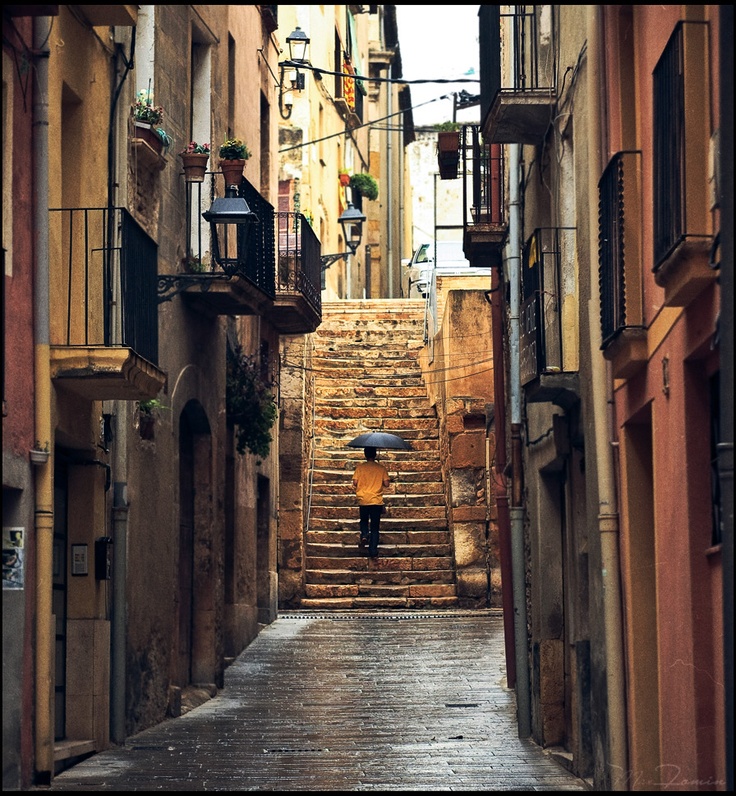
Avinguda Parallel
The Paral.lel Avenue is the street that is on the western edge of the old town, where the Sants-Montjuïc district begins and usually, except the fragment closer to the sea, no longer belongs to the Ciutat Vella district.
The Parallel avenue communicates Spain Square with the Port Vell (old port), and at the closest side to the port there are the Royal Shipyards of Barcelona, where is located the Maritime Museum, one of the many free museums open on Sunday afternoon.
Although strictly speaking, they belong to the old town only those in the Raval side and at the last segment of this Barcelona street, it is worth mentioning the nightclubs and theaters that are approximately up to the Nou de la Rambla street, before reaching the old port which have brought fame to Barcelona’s Parallel avenue.
If you are around that area, you’re pretty close to the Sant Pau del Camp Monastery and the Rambla del Raval.
The Port Vell (The Old Port)
This is the old port of Barcelona and is undoubtedly an area which HappyBarcelona.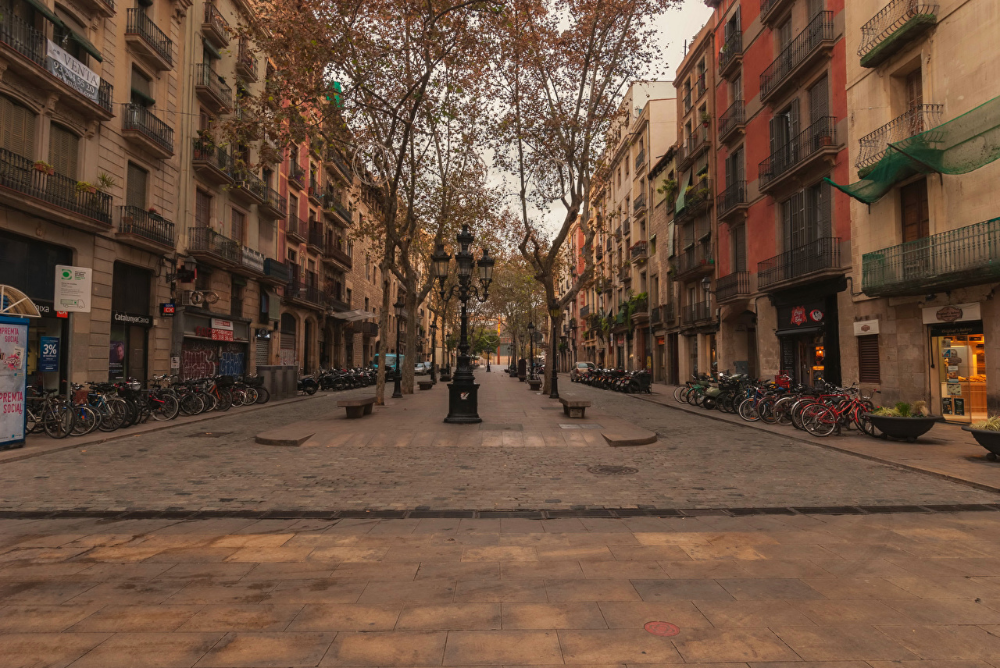
In addition to the viewpoint, you can stroll along the Bosch i Alsina wharf, popularly known as the Moll de la Fusta or the Passeig de Colón, you can cross the Rambla del Mar bridge and get to the Spain Wharf, where the Aquarium of Barcelona with its sharks and the Maremagnum are, a mall open 365 days a year, and the IMAX Port Vell, a cinema with a surrounding giant screen where you can watch documentaries and movies in 3D.
In the Portal de la Pau square you will see the Golondrinas mooring, a type of tourist boat to take boat trips around the harbor and along the coast of Barcelona, if you want you can be transported to the Parc del Forum on the other side of the city.
How to get to Ciutat Vella
It is very easy to get to the historic center of Barcelona. The starting point may be perfectly Plaça de Catalunya (Catalonia square), a meeting point widely used by people, among other things, for being the best connected place in Barcelona.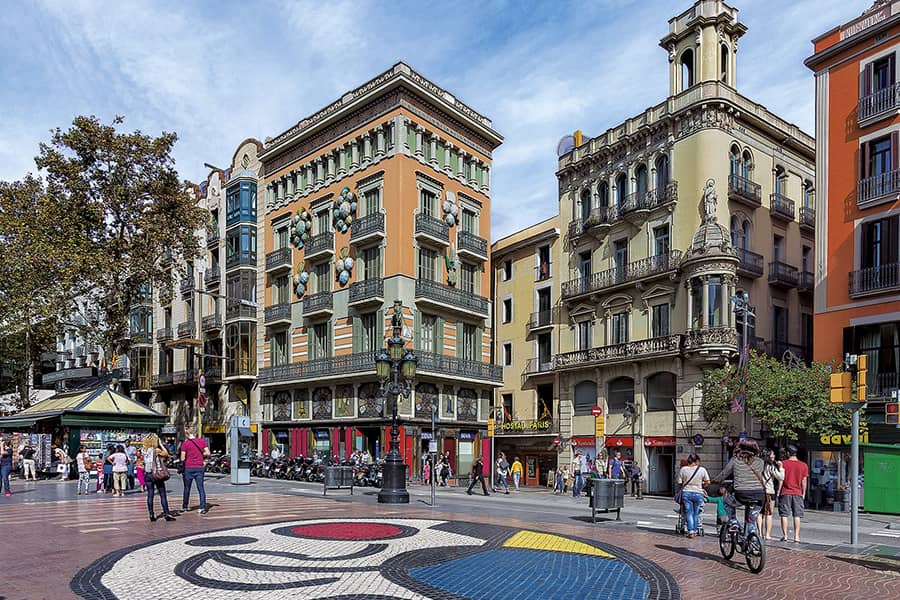
From the square, everything you’ll find if you look southbound, forms part of Ciutat Vella.
Although it is a very brief description, if from Plaça de Catalunya you locate the Rambla, you’ve located the border between the Gothic Quarter and the Raval. If You locate Portal de l’Àngel, you’ll be in front of the main avenue that goes into the Gothic, and if you locate the building of El Corte Inglés, you can go to Urquinaona Square, which is on the other side of the block, where you will see Via Laietana street. This street divides the neighborhood of Sant Pere, Santa Caterina i la Ribera with the Gothic Quarter, and if you continue straight down Via Laietana to the end, you will reach the Barceloneta quarter.
How to get to Ciutat Vella by metro
Barcelona’s Old Town is a district made up of four quarters, which covers an area of the city where you will find quite a few subway stops belonging to different lines. Choosing one or another depends on the specific point of the district you want to visit.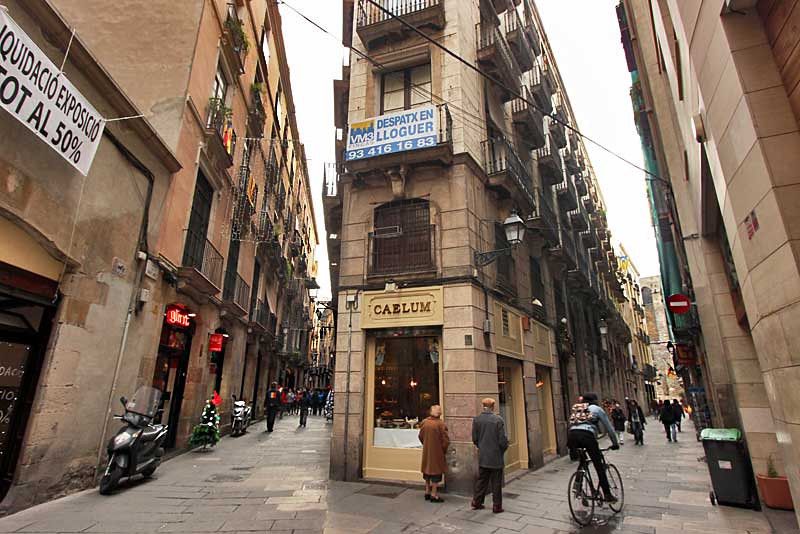
The metro stations to get to Ciutat Vella
Catalunya metro stop (lines L1 and L3) is in the same square. It is ideal if you do not know Barcelona and want to delve for the first time through the streets of the old town, especially along the Rambla or Portal de l’Àngel.
In University Square is the stop called Universitat, with L1 and L2 subway lines. It is also a very good choice for a first visit, and you can get the Rambla strolling down the Pelaio street up to Plaça de Catalunya. To get off at Plaza Universitat is fabulous if you intend to visit the Raval quarter starting your walk from the top.
In Urquinaona square there are the L1 and L4 metro lines, which bears the same name Urquinaona. It can be useful if you want to take a walk to the end of Sant Pere, Santa Caterina i la Ribera, or visit the Arc de Triomphe taking a short stroll. It is also a good choice if you want to walk down Via Laietana street.
But if you want to visit the edge where the Arc de Triomphe and the Passeig de Picasso are, we recommend you to get off at the stop called Arc de Triomf (metro line L1).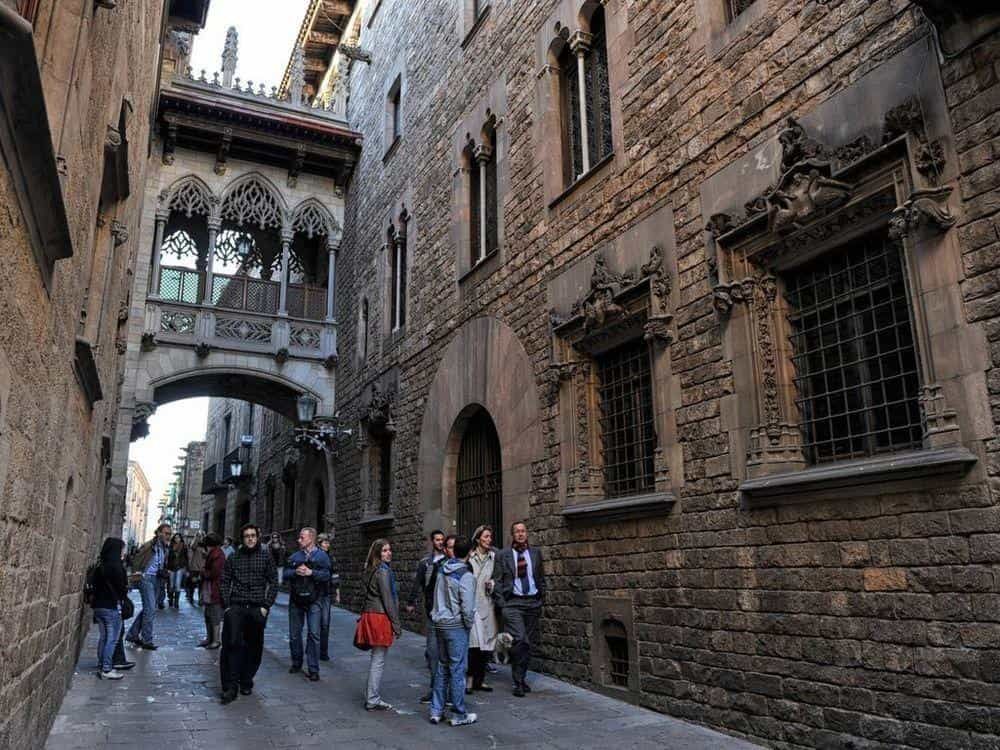
If you are interested in a subway station that drops you near the Port Vell, we recommend you to get off at Drassanes (from L3 line), which is in the lower part of the Ramblas, near the Royal Shipyards, the Columbus Viewpoint or the Wax Museum and its cafe, el Bosc de les Fades, and also close to the Rambla del Mar and the Spain Wharf, so you can get to the Aquarium or to the Maremagnum.
To get to the Port Vell but on the other side, you can also get off at the stop, which is called Barceloneta, belonging to L4 line. It will be fine for visit the Estació de França, the Born neighborhood, which is the most bohemian part of the district of Sant Pere, Santa Caterina i la Ribera and the Spain Wharf. Although the Barceloneta stop will be also fine to visit this beachside suburb of the Old Town.
If you want to visit the Raval, you can get off at the Liceu stop from metro line L3, as it leaves you halfway up the Ramblas, just where the Liceu Grand Theatre and the Boqueria market are, although as it has been discussed above you can also get off at University Square with L1 and L2 lines.
Alternatively, to visit what once was Barcelona’s Chinatown, is to get off at the station named Paral.lel from L2 and L3 metro lines. This subway stop is at the height of the Nou de la Rambla street. From the subway exit, you’ll get to the Rambla del Raval walking in less than 10 minutes, passing halfway up by the Sant Pau del Camp Monastery.
The Paral.lel stop can be also useful if you come from the Montjuic Park, because there also stops the funicular that goes up to the mountain and links to the cable car leading the Montjuic Castle.
The metro stop named Jaume I (line L4) will be fine to get into the Gothic Quarter at the height of the Sant Jaume square where the Town Hall and the Catalan Government are, but it will also serve you well to get into the Ribera as it is up to Princess street and the Argenteria street, so you can easily get to the Basilica Santa Maria del Mar or to the former Born Market and many other parts of the Ribera neighborhood.
Getting Ciutat Vella from Passeig de Gràcia
If you want to stroll through this wonderful Art Nouveau Barcelona street before arriving at the old town, we recommend you to start your journey from the far north, because Ciutat Vella is at its southernmost part.
If you want to go by metro, HappyBarcelona.eu recommends stopping off at the L3 and L5 lines station which is called Diagonal and links to the FGC, and drops you off at Rambla de Catalunya and Passeig de Gràcia, depending on where you go out to the street, but very close to Diagonal street, which is on the highest part.
You can walk south until you reach Catalonia Square, place from which begins the district of Ciutat Vella.
How to get to the old town from Sants Station
Those who are in Sants Station have different ways to get to the Ciutat Vella district.
The best known is to caught in the same station the L3 metro line to get to the metro stops Drassanes, Liceu or Catalunya, which all three are located in the old district.
But from Sants Station you can also get the trains that leave you at the Station of France, and for them you can use the same metro ticket. These trains arrive and depart from the platforms 13 and 14.
By those same platforms, depart also trains that drop you in Passeig de Gràcia, and you can walk about 10 minutes to get to Catalonia Square, and on platform 8 constantly depart trains that leave you in this city center square and in the Arc de Triomf station.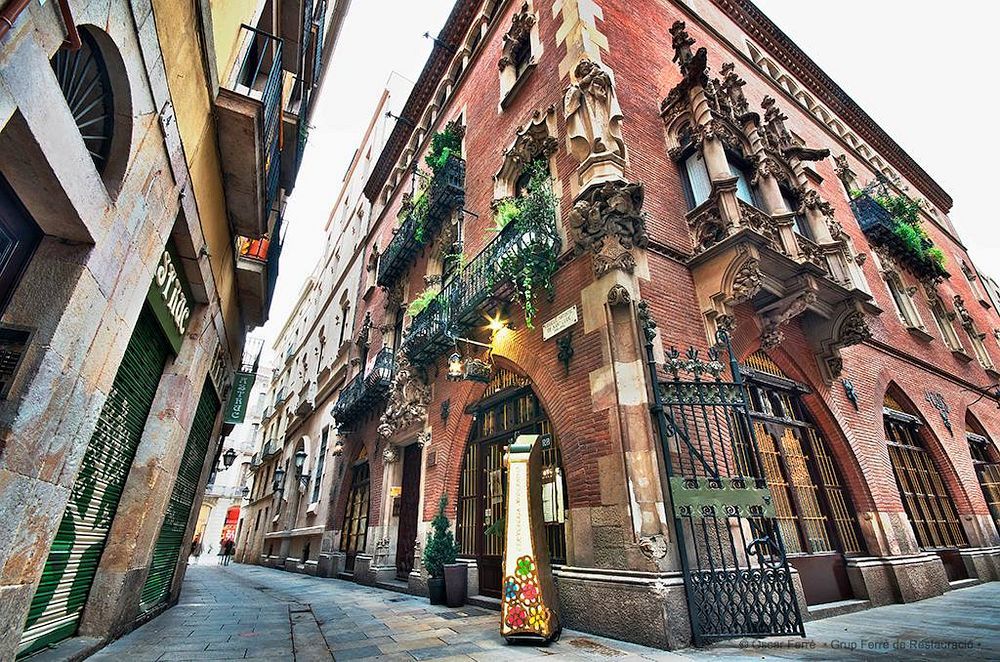
How to get to Ciutat Vella from the Clot
In this case, we recommend you the L1 metro line that leaves you at the Arc de Triomphe, Catalunya or Plaça Universitat stations, although you could also use the commuter trains since this metro station links to the RENFE railway.
The L2 line that also passes by the Clot, will take you to the station in Paral.lel avenue.
Related Links
About English translation
If you have found this article useful, please help me by clicking one of the buttons below, or following me on social networks. Thank you very much!
|
Twit it |
Barcelona Old Town – Guide Barcelona TM
1Gothic Quarter
Let’s start exploring the Old Town of Barcelona from the Gothic Quarter, which has preserved numerous medieval buildings from the period of power of the Kingdom of Aragon, located between the eminent Las Ramblas and Via Laetana.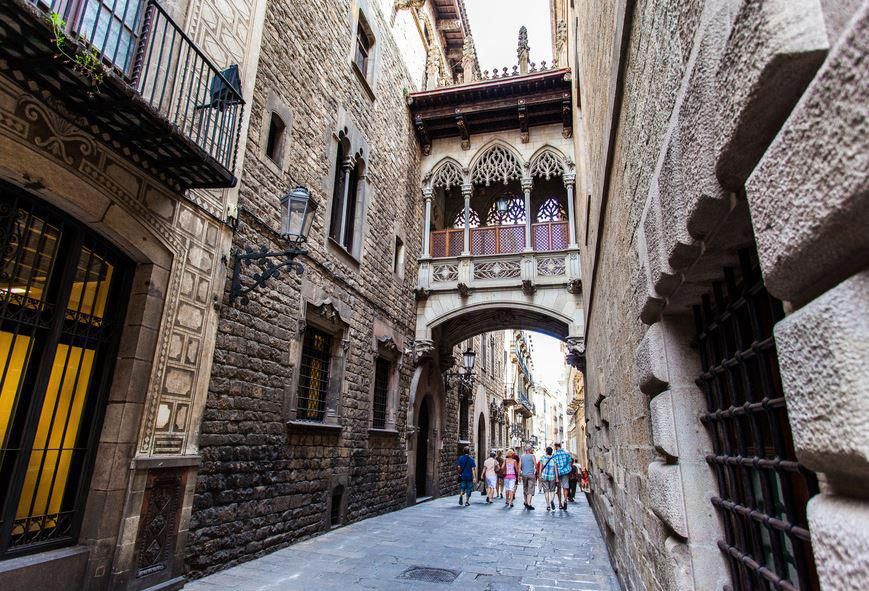
The best tours of the Gothic Quarter
Most of the streets and buildings here date back to the XIV-XV centuries, but there is also a fragment of the wall from the era of the Roman Empire, since it was at that time that the area began to be populated. There are many streets restored at the beginning of the 20th century, and now they are pedestrian streets.
In the heart of the Gothic Quarter is the Cathedral of Saint Eulalia, the main cathedral of Barcelona and the residence of the Bishop of Barcelona.
2La Ribera Medieval District (Born)
To the north of the Gothic Quarter, the La Ribera district originates, formed in the Middle Ages as an area of artisans and merchants, at that time there were many jewelry, glass-blowing, weapons shops, a number of which “survived” to this day.
The main attraction of the area is the Cathedral of Santa Maria del Mar, discreet on the outside, but grandiose on the inside.
In the XVIII century, after the conquest of Barcelona by King Philippe of Bourbon, a fragment of the coastal quarter of La Ribera was destroyed, and a defensive citadel was erected here. But, already after 1.5 centuries, the fortress lost its military function, and the Citadel Park was built on its site, which for a long time was the only green oasis in the city.
The territory of the park currently contains:
- an artificial lake;
- a number of museums;
- Barcelona Zoo is a must-see if you are traveling with children.
People evicted from La Ribera during the construction of the fortress were moved to a new quarter by the sea, La Barceloneta.
3 Raval district
To the left of the Rambla is Raval, which is not the most harmless and tidy area of Barcelona, but has its own unique aura. Its fragment, adjacent to the port, was previously known as a red-light district, however, at the beginning of the 20th century, the territory was ennobled and turned into a more harmless and friendly to guests. There are many authentic cafeterias, small restaurants, small designer shops, as well as art studios and galleries. It also houses the Museum of Modern Art of Barcelona.
The promenades in each of the districts of the Old Town of Barcelona will leave a lot of pleasant memories. You can combine an entertaining excursion, superficial shopping and imposing rest.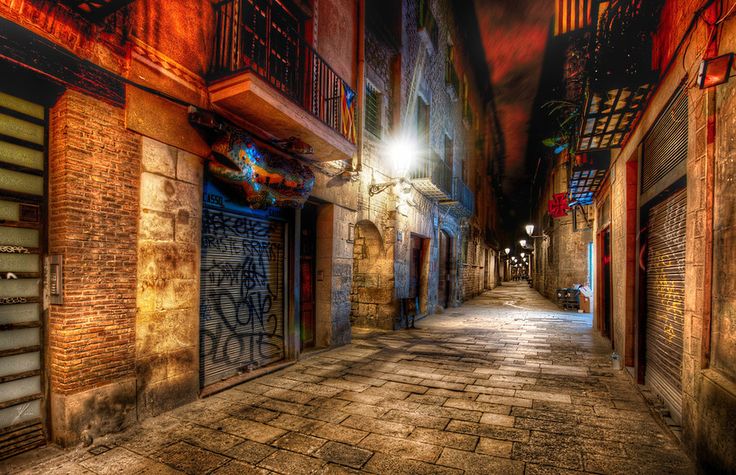
How to get to Barcelona’s Old Town
The easiest way to get to Ciutat Vella is by metro. About 10 metro stations are located on its territory and directly at the borders.
Most comfortable:
- Cataluña;
- Jaume I;
- Urquinaona;
- Liceu;
- Drassanes.
Barcelona’s Old Town on the city map
Barcelona’s Old Town is easy to see on every map of Barcelona – a territory where a systematic grid of sprawling streets flows into a labyrinth of tight alleys, suddenly leading to squares of the most phantasmagoric geometric shapes. These are the last fragments of the medieval Old Barcelona, which saved the grid of streets and, to a large extent, buildings.
In order to have at least some way of movement here, in modern times streets were laid through the area of the Old Town of Barcelona, \u200b\u200bthe widest of which are the Rambla and Via Laietana, leading from Plaza Catalunya to the sea.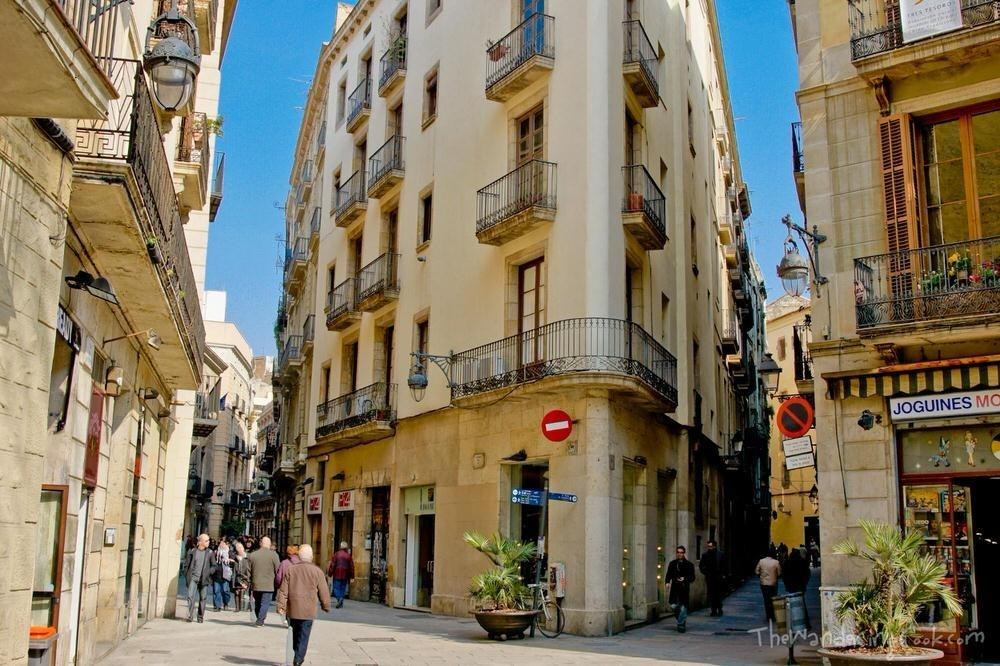
You can see the best hotels in Barcelona’s Old Town using the link on Booking.com.
- How to avoid queues at Barcelona attractions. Tickets for Sagrada Familia and Park Güell skip the line.
- How not to be deceived by local taxi drivers. Order a taxi in advance with fixed rates online. The most reliable service for ordering a taxi is KiwiTaxi .
- Excursions in Barcelona with locals will help you to get to know this city for real. The best way to get comfortable in an unfamiliar city is to walk around it with a person who has lived here for many years.
- We advise you to take out travel insurance so that there are no unpleasant surprises while traveling to Barcelona.
-
Barcelona City Pass is a one-stop card that makes organizing your holiday in Barcelona easier and saves you a lot of time and money.
- Barcelona Hotels: is our selection and recommendations.
- Bus Turistic is a tourist bus and a great way to get to all the necessary monuments of Barcelona quickly, with a breeze and comfort.
- Drimsim is a universal international SIM card and a free travel application. Best prices, fast internet and worldwide calls.
District Old Town | Planet of Hotels
Old Town (Ciutat Vella) is the oldest and one of the most picturesque areas of Barcelona. Small squares and narrow streets are densely packed with medieval and modern buildings. This part of the city is located between the Eixample and the Mediterranean Sea.
The quarters (barrios) of the Old City, which are part of it, are fundamentally different from each other. In the Gothic Quarter (Barri Gotic), ancient streets intertwine between palaces and the remains of Roman walls and fortifications, in El Raval you should beware of pickpockets and avoid evening walks, the Barceloneta quarter attracts tourists with its promenade and beaches, and the barrio of San Pere, Santa Caterina and La Ribera (Sant Pere, Santa Caterina, La Ribera) has retained its medieval structure.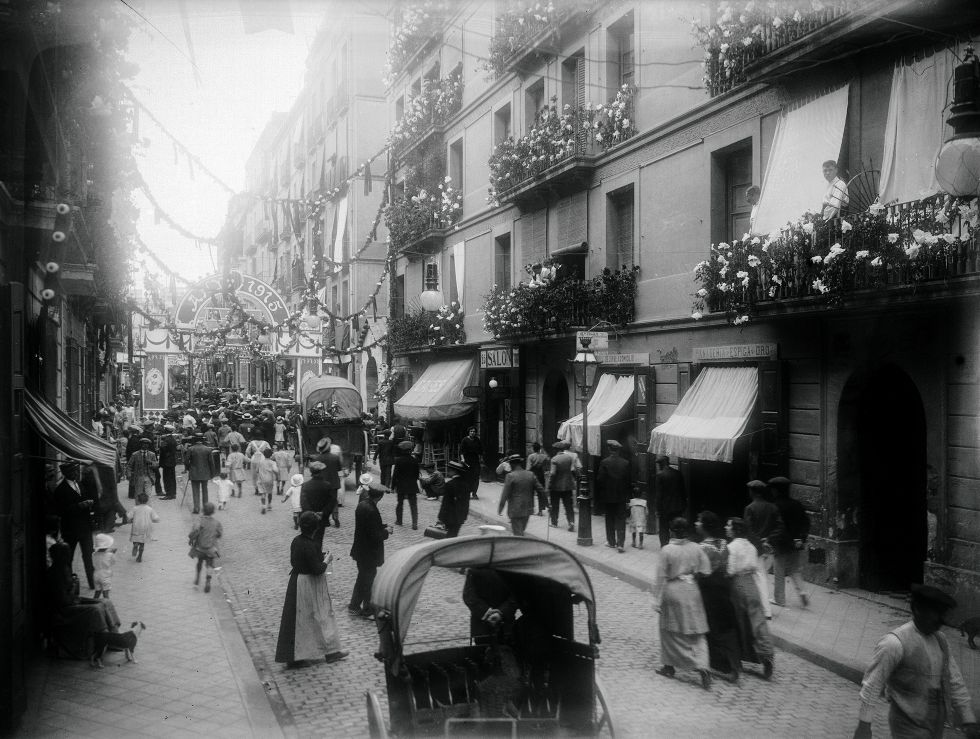
All photos
Map of the Old Town
What to see in Barcelona’s Old Town
Each block of this area has a large number of attractions. There are objects from the UNESCO World Heritage List, churches, monuments, palaces, museums, etc. The architecture of the Old Town attracts a huge number of tourists, and the area itself can be called the soul of Barcelona.
- Palau Güell is a famous creation of the brilliant architect Antonio Gaudí. This is a magnificent example of Catalan modernism, a UNESCO World Heritage Site. Inside is the Museum of Performing Arts.
- Parc de la Ciutadella is a green oasis in the middle of Barcelona and a favorite place for walking among locals and tourists. Previously, there was a huge fortress here, but the freedom-loving Catalans turned the territory into a picturesque corner with flower beds and waterfalls. The park, which covers an area of about 30 hectares, has an incredible number of various monuments and sculptures.
In addition, one of the best zoos in Europe is located here.
- Picasso Museum (Museu Picasso) – a museum that has collected the largest collection of paintings by the great artist. The exposition is presented on the territory of five mansions in the Gothic style, and the maestro’s works are arranged in them in chronological order: this makes it possible to see how his character and style were formed.
- The Palace of Catalan Music (Palau de la Música Catalana) is a concert hall in Barcelona, also included in the UNESCO World Heritage List. The incredible architecture of this temple of the arts has made it the hallmark of the city. At the entrance to the building there are busts of the greatest composers: Richard Wagner, Johann Sebastian, Ludwig van Beethoven.
- The Church of Santa Maria del Mar (Basílica de Santa María del Mar) is one of the must-see places in Barcelona. This cathedral, built in the 14th century, is an example of Catalan Gothic. The building was built on donations collected by sailors and merchant guilds, and it is named after the patroness of sailors, St.
Mary.
In addition to these iconic Barcelona sights, there are plenty of places to visit in the Old Town. Among them are the residence of the Archbishop, the Cathedral of the Holy Cross and Saint Eulalia (Catedral de Barcelona), the Grand Royal Palace of Barcelona (Palau Reial Major), the Royal Square (Plaça Reial) with lampposts by Antoni Gaudí, the Arc de Triomf Barcelona, a monument Columbus and many museums.
Sagrada Familia
Mount Tibidabo and Temple of the Sacred Heart
Magic Fountain of Montjuic
Plaza Catalunya
Picasso Museum
Parc Güell
Camp Nou
5
House05 Gothic Quarter
Joan Miro Foundation
Mila House
Las Ramblas
Montjuic
Picasso Museum
Spanish Village
Barcelona Aquarium
Sitges
Barcelona Cruise Port
Pyrenees
Barcelona Zoo
Barceloneta Beach
Torres Winery
Caixa Forum Cultural Center
Casa Batlló
Restaurants 9000 2 In the historic center of Barcelona, you can easily find a suitable place to have a leisurely breakfast, take a lunch break or relax over dinner.
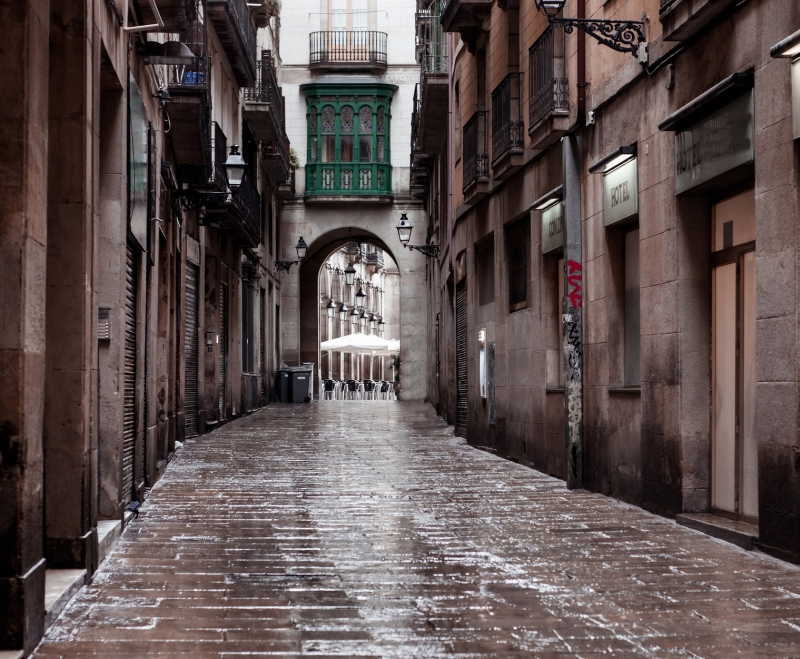
- Torre d’Alta Mar is a chic Mediterranean restaurant in the Barceloneta quarter. It is located at the top of the Port Vell cable car tower at an altitude of 75 m, offering an unforgettable view of Barcelona.
- La Paradeta is a chain of seafood restaurants, one of which is located near Ciutadella Park. In this place, guests will find a huge selection of seafood: you can gorge yourself on oysters, shrimp, fried octopus and signature mussels in tomato sauce.
- Koy Shunka is a Michelin-starred Japanese restaurant. The serving of dishes here is thought out to the smallest detail; guests are offered a tasting menu. The institution is located 200 meters from the Cathedral of the Holy Cross and Saint Eulalia.
- Els Quatre Gats is the most famous café in Barcelona. Pablo Picasso, Antonio Gaudi, Salvador Dali were his frequent guests. The institution is located 300 meters from the Palace of Catalan Music, and serves Mediterranean, Spanish and European cuisine.
- Da Nanni Pizzeria — Lovers of Italian cuisine will appreciate this diner. They serve delicious pizza and pasta here. It is located 1 minute walk from St. James Square (Plaça de Sant Jaume).
Shopping in the Old Town
The Old Town is filled with various markets, shops and shopping centers. Here you can find absolutely everything, including gifts and souvenirs.
- Boqueria Market (Mercat de la Boqueria) is the most visited marketplace in Barcelona, located in the El Raval quarter. This place is a real gastronomic paradise: here you can buy fruits and vegetables, fresh meat and fish, a variety of delicacies and bread that has just been baked.
- Santa Caterina Market (Mercat Santa Caterina) – Another of the oldest markets in Barcelona, the roof of which is decorated with mosaics in the style of Antonio Gaudí. The place is ideal for those who want to get to know the culinary habits of the indigenous people of Catalonia. Here you can buy seafood, meat, fruits and vegetables, as well as different types of cheeses and spices.
Located 2 minutes walk from the Picasso Museum.
- Maremagnum is the largest shopping and entertainment center in the Old Town. People come here to dine, shop or watch a movie. There is also a children’s room, and from the terrace you can admire yachts and pleasure boats passing by. There is a shopping center on the territory of the Old Port.
- Papirum – a stationery shop 100 meters from the Cathedral of the Holy Cross and St. Eulalia, which is also a souvenir shop. There is a large selection of various writing products: fountain pens, ink, leather-bound notebooks, etc. In this place you can buy a nice souvenir from Barcelona.
- Base Elements Urban Art Gallery is an art gallery in the Gothic Quarter. Fans of comics, street art and graffiti will be delighted with the work displayed here, as well as the opportunity to interact with the artists. In the store you can buy any painting you like, which can then be delivered to you by mail.
Accommodation in the Old Town
The Old Town is the best choice for a tourist who wants to experience the spirit of the city to the fullest.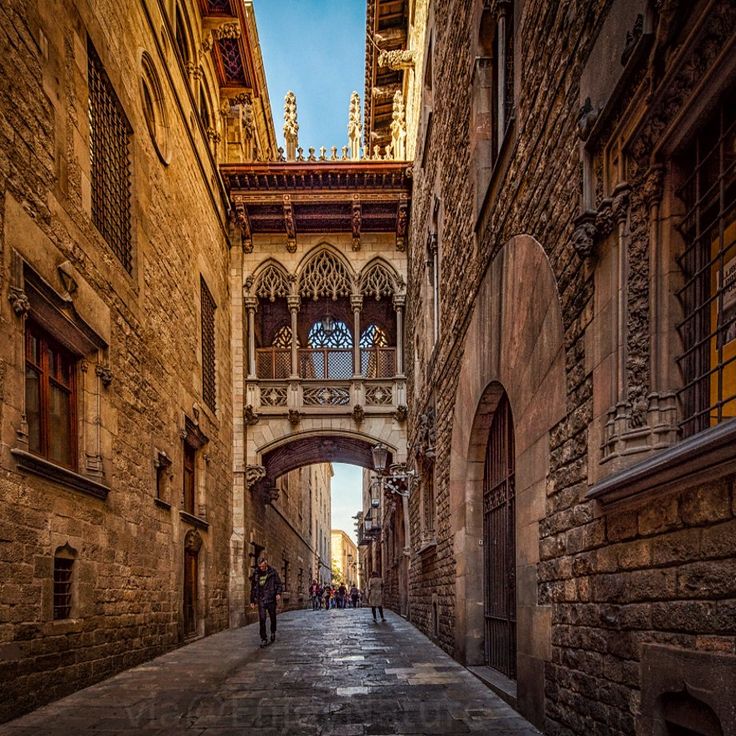
- Serras Barcelona 5* is a luxurious hotel in the Gothic Quarter with a convenient location – you can walk to the nearest beach in just 12 minutes. There is also a swimming pool and a Michelin star restaurant on site.
- W Barcelona 5* – the famous sail-shaped hotel in the Barceloneta quarter. This is a grandiose building, from the windows of which a picturesque view of the city or the Mediterranean Sea opens. Guests can use the spa and pools, or dine at one of the several restaurants.
- Hotel 1898 4* is a hotel located in a historic building of the 19th century, 3 minutes walk from the Boquería market. It has a rooftop pool, a spa and a restaurant serving Mediterranean cuisine.
- Catedral Bas Apartments Barcelona are spacious apartments with an equipped kitchen in every room. The property has a swimming pool and an elevator to access the upper floors.

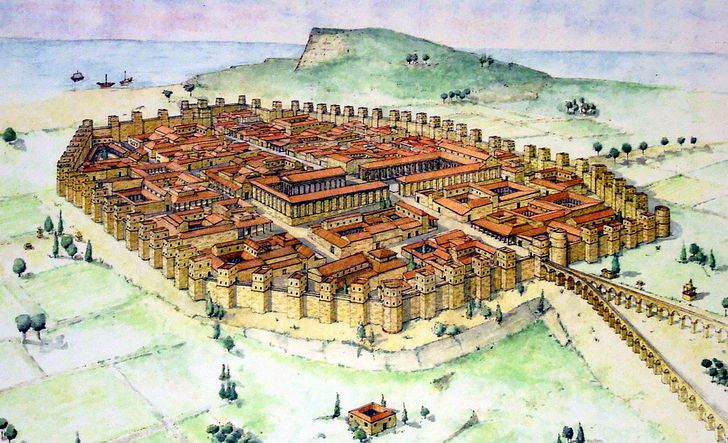
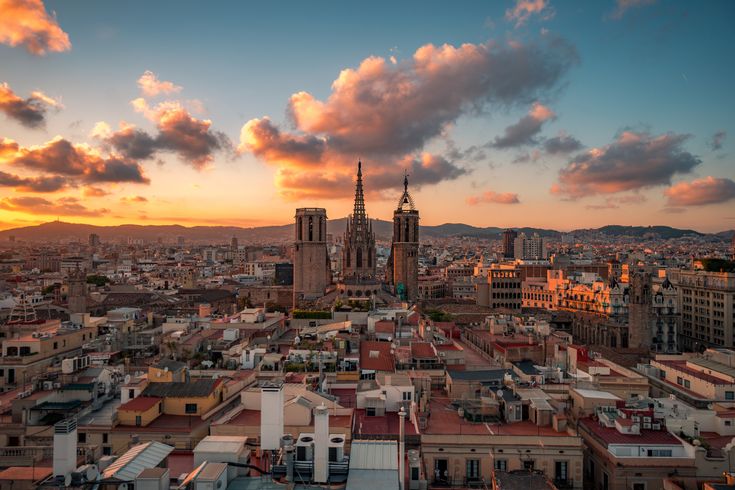 In addition, one of the best zoos in Europe is located here.
In addition, one of the best zoos in Europe is located here. 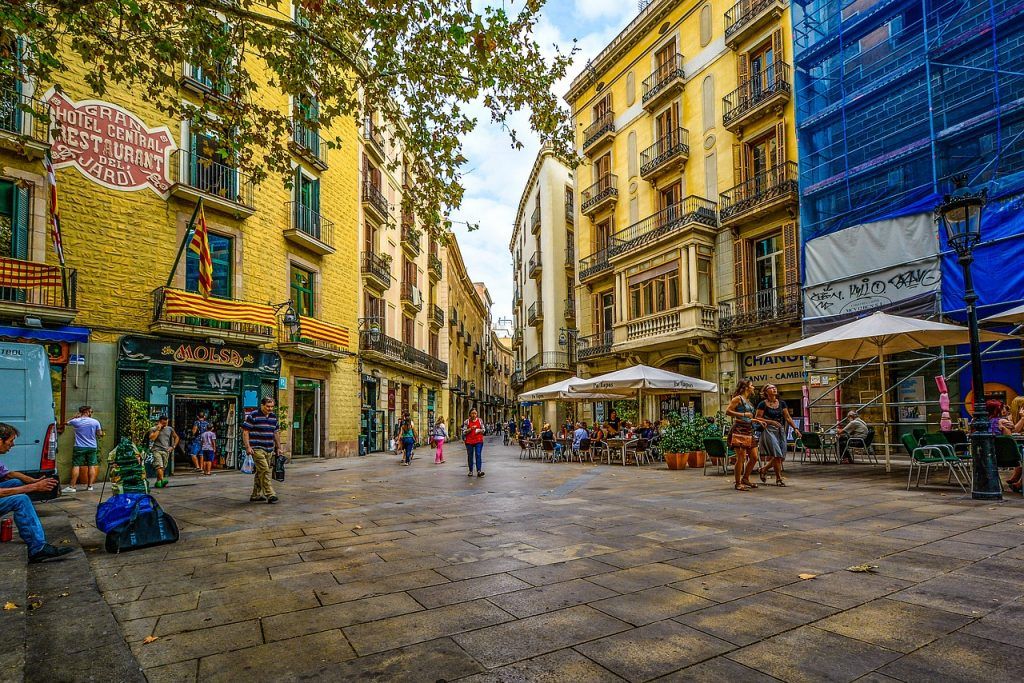 Mary.
Mary. 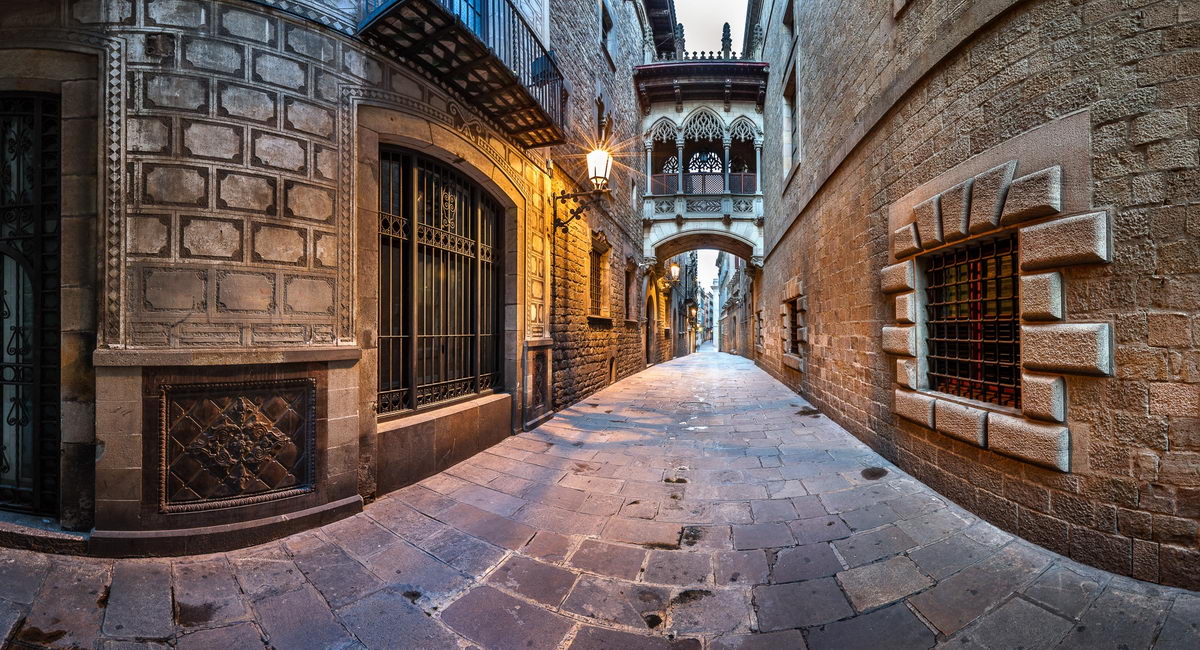
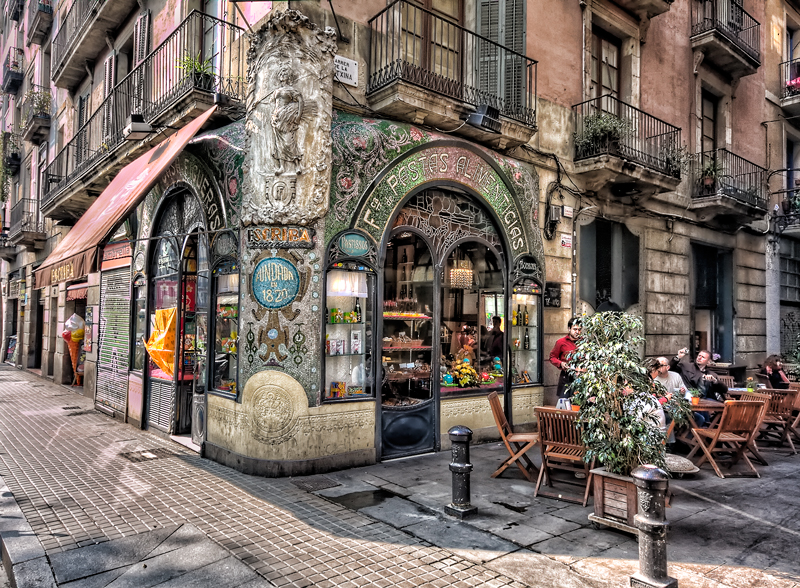 Located 2 minutes walk from the Picasso Museum.
Located 2 minutes walk from the Picasso Museum. 